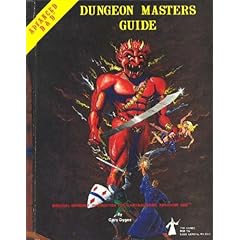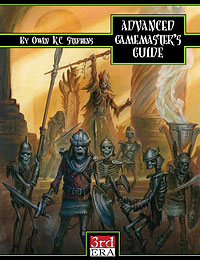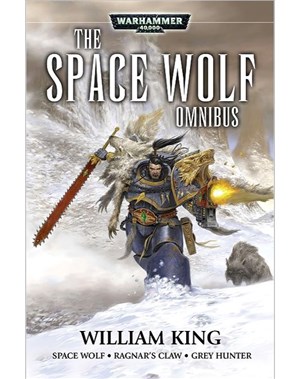
So, I was on my way to the games shop, today, to run a game of D&D using 4
th Edition rules, set in the Forgotten Realms. I wasn't even out of town yet when I became part of a line of other drivers alternating between 25 and 40 mph due to the snow, so I hit the grocery store to pick up some supplies and turned around. Feeling pretty cranky that my long awaited game of D&D would not happen, I started working the texts and emails to see if any of my usual gang of players would be interested in trying a game via Google Wave.
Google Wave invites were accepted and then Susana, Josh, Gareth, Stephan and myself were off to the races.
Well, kind of. Aside from the usual 'getting used to a new UI' experience that would come with any chat or email client, we had one big issue - laaaaaaaaaaaagggggg... I had only used Google wave for more slowly iterative exchanges, before - sending a document or clip to a co-worker or friend, leaving a message to schedule something or use some of the extensions/features specific to Google Wave. But for real time chat w/ multimedia?
Holy cow, it's slow.
I've already seen
tons of coverage of speed issues, but putting 5 people in one room, plus a dice rolling app (more on that in a moment, because that was wicked cool), we were lagging to the point where two players dropped out within the first encounter. (No harm, no foul on that.) One player very positively shared her experiences using
Skype plus
Ooovoo (to view her battle mat via
webcam), a free
web-based dice roller, plus an
SRD DM's Screen for 3.5e D&D. I myself played play-by-post on
dndonlinegames.com for
years. But the big boon for Google Wave - once Google gets the speed issue tackled, per the
mashable post I shared above (see "speed issues") - is that it combines all of the elements that one of the players is currently using 4 services for, and adds the real time element plus embedded media that were missing from the earlier incarnation of play-by-post that I played for a long time.
So, once speed is addressed, what were some of the cool flashes of future brilliance that we saw while playing today?
1) Embedding images in a very intuitive and graphically pleasing way. Let alone the fact that with a single push of the Images or Files button, you can very quickly review a gallery of images or documents that have been posted.
2) Managing player decisions with easy add-in's like the voting app. "OK, folks - do we go to the Dire Wood to investigate the rumors from the elvish explorers, or do you want to do something else?"
3) Managing dice rolls with Dicy (dice-y@appspot.com). Just add that address as a contact in your Wave contacts list, and then add that contact to any waves you wish to allow dice rolls in, and you'll see something like the following pop up to give you some guidance and options:
After that, any time you type something akin to [1d20+15], it will pause for a moment after you type the ] and then you'll see something akin to [1d20+15 = 10 + 15 = 25] populate out in the wave, reflecting the dice rolls. You can only roll one set of dice at a time, as far as I can see, but if you want to do the attack and damage simultaneously, typing [1d20+10] and then separately [1d8+6] isn't really so hard. I could, also, be misunderstanding the UI, so definitely explore it.
Recommendations?
A) Well, focus on the above ways of leveraging the tool for the intent it was designed, for one thing.
B) Also, until the speed issue is resolved, I found that larger blocks of text - anything more than 5-10 words - worked best when I typed things out in Notepad and then copied and pasted the full block over into the wave itself. One of the players noticed that the lag issue basically disappeared with that. The lag is definitely tied to the feature of showing typing as it happens, rather than just content and loading.
C) That said, we got up to 271 msgs on the Wave for the game we ran (which was really just a bunch of tavern time, plus some exploration and a single encounter with an Ettin), and while I have no metrics to back this up, I think that maybe the size of that wave added to the lag and slowness. I know that when I've used the search feature or tried to scroll through the wave since we wrapped the game, earlier today, it's pretty cumbersome. Maybe this is one of those things that will improve as we go, but I'd advise that you break out encounters and sections into different waves. Start in one wave, jump to another somewhere around 40 posts, etc. Even in play by post, I found this to be the case.
The above may sound like there are a lot of bugs, but the biggest and really the only salient one impacting play is the speed matter. As Google moves this from an alpha-beta to a beta-beta in practice, this should address itself, making this a much more powerful way to game. For the time being, for small groups that really familiarize themselves with the UI and the nuances, it should have some great potential. I, for one, am planning on finishing playtesting the next Dragon Age scenario that I have to test via Wave, this week.
Have any of the rest of you tried this out? What do you think? Ideas? Suggestions? Other extensions/bots for Wave that have helped you?
[And for those of you tracking the campaign - Amos, Scumbeard, and Narcy have now left Loudwater exploring the Dire Wood in the High Forest, borrowing extensively and shamelessly from the FR Campaign Guide. They met a 2 headed ettin, saw, and conquered. In the ettin's den, they found a note and some gold from a fey/elvish creature that was apparently paying off the ettin to guard the albino ring of trees that surrounds the Dire Wood... Ooo - a fey conspiracy! Tune in next time...]






















